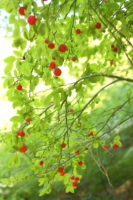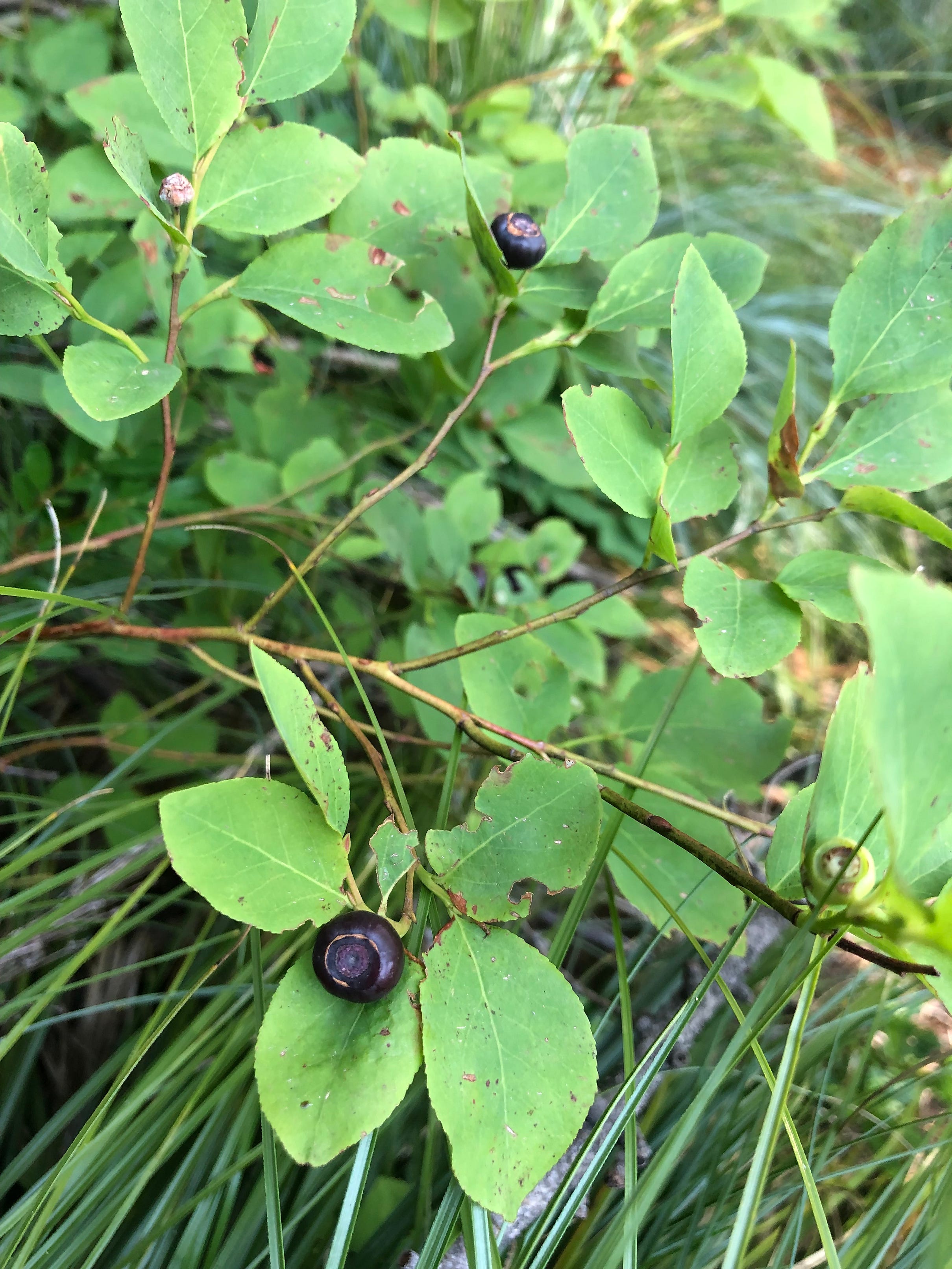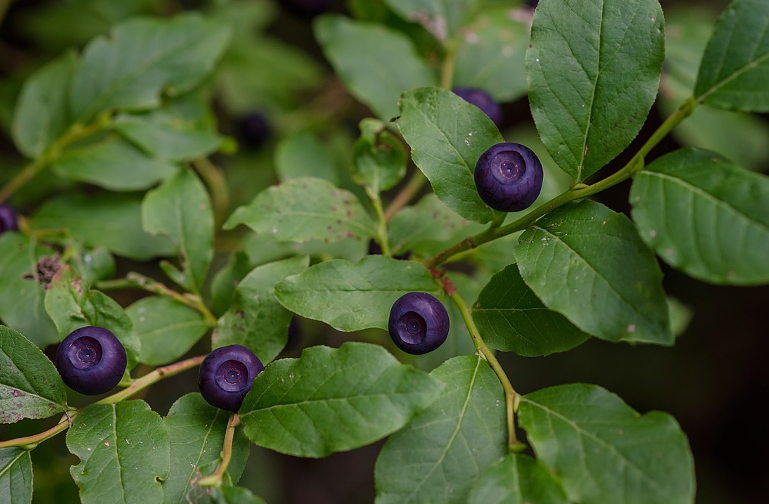The Flower Diaries
As a plant ecologist, Dr. Janet Prevéy, would rather be foraging in berry patches than the personal affairs of others: “I just don’t ever find humans that interesting,” she jests. Yet, on the subject of personal diaries she enthusiastically admits to prying eyes.

Leafing through tattered diaries and other historical documents, ecologists are now finding clues about how plants are responding to climate change. Japanese diaries spanning back to the 10th century hold records on the timing of cherry blossoms around Kyoto. Likewise, journals from the likes of Henry Thoreau now provide useful data points on the timing of tree leaf-out and the emergence of wildflowers in the springs of bygone centuries. Unknowingly, ghosts of the past have become citizen scientists by virtue of their recordkeeping.
Data on plant emergence and flowering gleaned from historical documents allow scientists to map how plants are altering their life cycles over centuries in response to variation in temperatures with climate change, a phenomena called phenological shifts. “Thoreau took really detailed nature observations and people are going back and using Thoreau’s notes and comparing them to current phenological events and noting changes,” says Prevéy, “which is really cool.”
As the climate changes, phenological shifts of plants can strongly impact ecosystem dynamics. Scientists are observing one instance with spring flowers and their pollinators. As growing day length and snowmelt herald the spring, bumble bees emerge from underground wintertime burrows, waddling around the blue-flowered inflorescence of Corydalis ambigua, a plant in the poppy family, to collect pollen and nectar. In doing so, bees pollinate the flowers, carrying pollen dusted in their fur from flower to flower, ensuring viable seeds and future generations of the plant. Evolution has finely tuned the timing of the bumblebees and Corydalis to interact in specific, intricate ways. With the increased temperatures and earlier snowmelt of climate change, research shows these flowers and bumble bees are leaping into action earlier in the year. And it’s not just bumble bees and their blue poppies. Many other pollinating insects are also buzzing into action earlier, and other plants are bursting into flower sooner than they used to. How much earlier, however, looks to vary within the pollinator-flower partnerships, putting their well-rehearsed, coordinated timing — and mutual survival — at risk.
The implications of changes in the timing of plant life cycles may be subtle but also notable for humans, from traditions of picking berries in local landscapes to society’s dependence on agriculture. “Something that is happening really frequently now with vineyard and fruit orchards is that as things flower earlier and earlier their risk of frost damage is higher and higher and higher,” Prevéy explains.
Mountain meanderer
Prevéy has long resided in mountain landscapes, having traversed the Colorado Rockies and Swiss Alps for various research efforts and positions before landing in the Pacific Northwest working with the US Forest Service. Despite all the geographical changes in scenery, she enjoys a constant of summertime jaunts on mountain trails. At the right time of year her outings are rewarded with a surfeit of sustenance, sun-ripened berries that rarely make it back home, except once in an inspired moment of self-control to “make one pie, barely.”

A fruiting mountain huckleberry (photo: Janet Prevéy)
For many living in the Pacific Northwest, berries are an emblem of summer and fall outings in nature, but for Prevéy they also keep her trained on her research questions around how plants are responding to climate change. “If they were ripe, I would pick them, and I would also take the observation of when they were fruiting,” she says of her berry foraging. As it turns out, similar observations from amateur citizen scientists are also helping to advance science. From people who have logged photos of huckleberries on iNaturalist, a freely-accessible plant identification app, Prevéy has built models to better understand the potential shifts in the timing of when huckleberry flowers and produces berries alongside ongoing climatic changes.
Academic studies around such plant phenological shifts have largely focused on more high profile invasive or rare plants, but for Prevéy the mountain huckleberry, Vaccinium membranaceum, has proved a fascinating harbinger of climate change.
“The idea was to select some plants that were really important to people in the area, so things that people traditionally harvest. Tribes will have harvest festivals at certain times of the year to celebrate the harvest, people gather them, freeze them. It’s always been a really important cultural practice and it still is today,” she said. Beyond implications for ecosystem dynamics, insights into how the huckleberry will respond to climate change brings up larger questions of how this humble berry is tied to a sense of place and human traditions.
Huckleberry models
To figure out how huckleberries will respond to changing temperatures of the future, Prevéy and team first collected data to understand how temperatures trigger the biological stages of the plant’s flowering and fruiting. Drawing on long-term datasets from federal agencies and academic research projects, the team gathered thousands of observations of when huckleberry set flowers or berries in the region and the corresponding local temperature measurements for each of those observations.
In addition, Prevéy went to the public for help. Hikers and berry foragers supply her with valuable data when they snap photos on their phones of huckleberry plants dappled with white and pink bell-shaped flowers or rounded blue berries, and upload them to iNaturalist. These photos are automatically geolocated and dated and Prevéy can then pull temperature data from other sources for those particular locations and times. Altogether, from government databases to the records of smartphone app aficionados, Prevéy’s team has built computer models predicting when huckleberries flower and set berries based on environmental temperatures.
To then figure out how berry timing may change in the future, Prevéy ran her model against 15 common scenarios of projected temperature increases. The model demonstrates that we should anticipate strong phenological shifts in huckleberries in the coming years. The seasonality of huckleberry fruit that people know of today may not be true of the future, said Prevéy. “By mid-century flowering and fruiting could be advanced by a mean of 20 days, so almost a month, and by the end of the century under the highest emissions scenario there was possibility that fruiting could advance by over 60 days in some areas, so the models are showing about a two month change in berry ripening.” In other words, huckleberries will fruit far earlier in the season; future generations may no longer associate the huckleberry with the late-summer that is so ingrained in local traditions from festivals to food-making of today.
For the Yakama Nation, native to the Pacific Northwest, the huckleberry is intimately tied with lifeways and culture, historically providing an end-of-harvest food around which traditional berry celebrations are centered. Earlier huckleberry flowering and berry production with climate change will inevitably challenge cultural associations and identity that are coordinated with the berry lifecycle.
The impact of such phenological shifts on ecosystem dynamics remains an open question. Will bees be active earlier in the year to pollinate the advancing blooms and transform them into berries? Besides insects, other wildlife relies on the huckleberry for sustenance at particular times of years. “A lot of the people that are interested in our research are people that study grizzly and black bears,” said Prevéy.
Berries for the future
“It’s really hard to imagine [huckleberry flowering and fruiting] happening a full month or two ahead of the date it happens now, but people will have to change,” says Prevéy. She caveats the model findings with the possibility that other factors, such as day length or snow melt, could at some point influence the extent of this shift; but, while seemingly “kind of crazy,” such phenological shifts have been occurring unnoticed in front of our own eyes for some time.
Prevéy and team looked at 60 years of records on Oregon grape flowering and fruiting from one Salem, Oregon resident who made meticulous annual notes. This has shown that flowering dates have advanced over 50 days, in step with warming temperatures. To Prevéy, this finding highlights how valuable such records are to understanding local ecosystems and climate change: “…we should all just be taking more observations.”
The models resulting from Prevéy’s study demonstrate the scientific value of data collected by members of the public while out hiking and photographing the living world around them. The delight of a ripe, late-summer huckleberry can act as a reminder to record berry timing with a photo uploaded to the iNaturalist app. The resulting crowd-sourced digital diary, like collections of Japanese diaries from centuries past, is already beginning to inform efforts that track and predict plant responses to climate change. Collectively, there is an opportunity to better track phenological shifts and manage, adapt, and prepare for changes that lie ahead…and it might just start with a small, delicious berry.
Listen to more on the topic and this research in the Botany Brew Podcast:
Episode 1: Dr. Janet Prevéy explains the efforts behind understanding Huckleberry responses to climate change.
The original research relating to this article can be found here.
Teaser photo credit: By Bruno.karklis – Own work, CC BY 4.0, https://commons.wikimedia.org/w/index.php?curid=71361345





